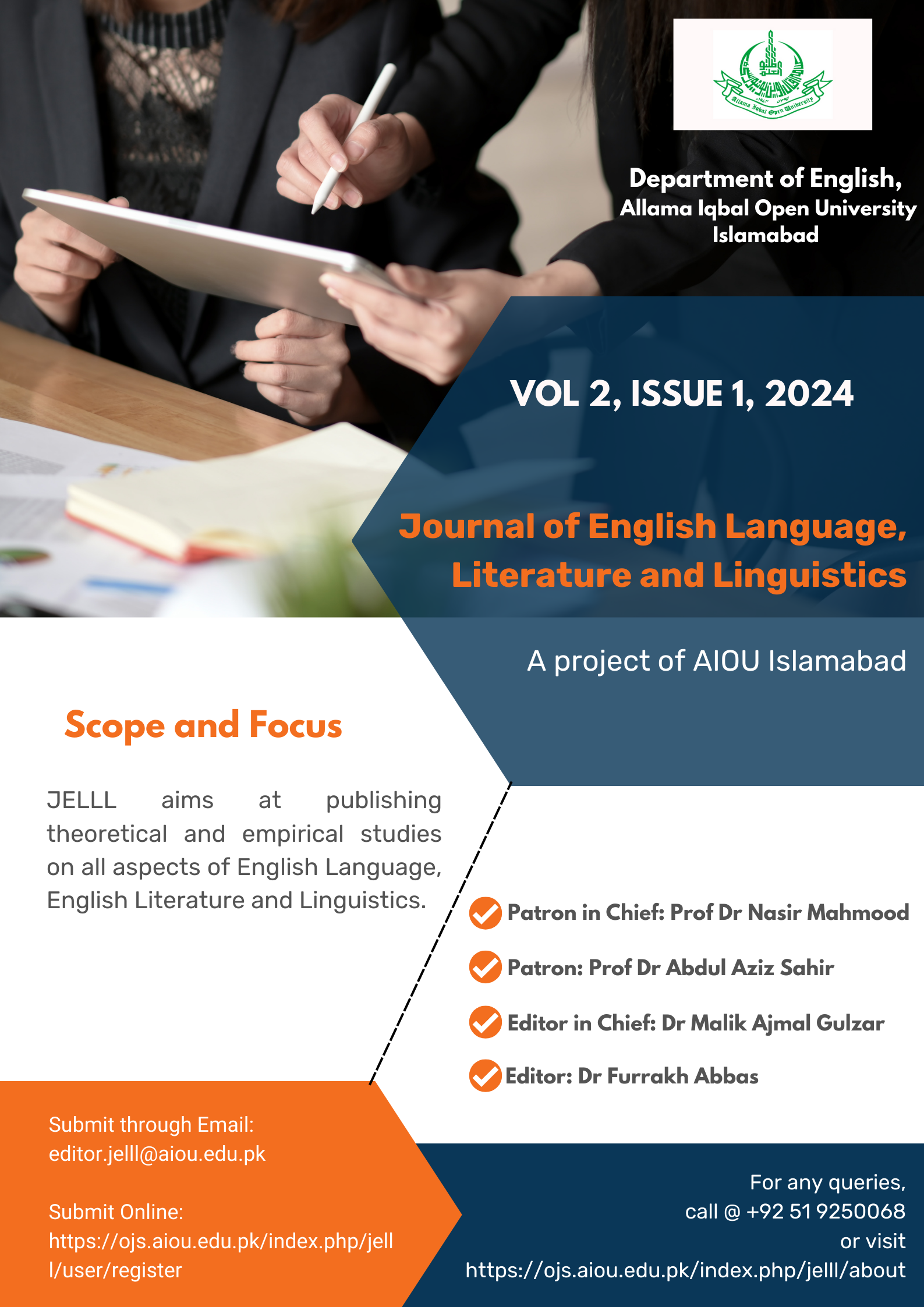An Analysis of Problematic Vowel Sounds for College Level Students in District Buner
Abstract
Abstract
Pronunciation plays a vital role in daily life communication. It has great impacts on both speaking and listening. The main purpose of the current study was to analyze the problematic vowel sounds for the college level learners in District Buner. Moreover, it aimed at comparing the formant frequencies (F1 and F2) with the formant frequencies of native speakers. For this purpose, the researcher took 20 words having vowel sounds at the middle position. 20 students were included in the study through representative sampling technique. Their pronunciations were recorded in a sound proof room. The spectrograms of the vowel sounds were taken using PRAAT Software on computer which gave the formant frequencies (F1 and F2). The average frequencies of the target participants were calculated which was compared with the formant frequencies of the native speakers to find the problematic vowel sounds for Pashto speakers. The study is quantitative in kind. Results showed that English diphthongs were more problematic for the college level Pashto speaking students in District Buner. Diphthongs /ɔɪ/, /ʊə/, /eɪ/ and /aɪ/ were found highly problematic for Pashto speakers while the three diphthongs /ɪə/, /eə/, and /aʊ/ were found less problematic for them. Highly problematic monophthongs were /ʊ/, /e/, /ə/, /æ/, and /ɔ:/. The remaining monophthongs were found less problematic for them. The current study left a research gap for future researchers to explore vowel sounds at the initial and final positions of words.
Key Words: Formant Frequencies, Diphthongs, Monophthongs, PRAAT, Vowel Sounds.
Downloads
Downloads
Published
How to Cite
Issue
Section
License
Authors shall retain the copyrights to the article. Author/s grant the journal an irrevocable,
non-exclusive license to publish the article electronically and in print format, and to identify
itself as the original publisher. Author(s) can grant any third party the right to use the article
freely as long as its original authors and citation details are identified. The article is
distributed under the Creative Commons Attribution 4.0 License. Unless otherwise stated,
associated published material shall be distributed under the same license.


